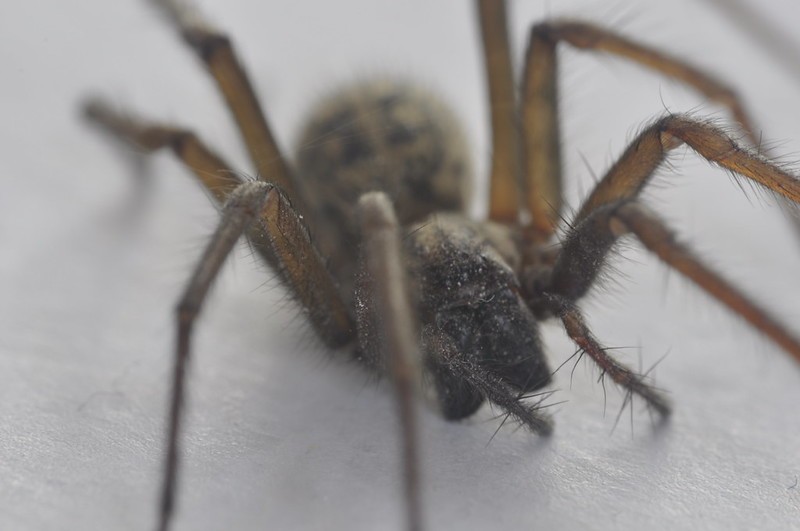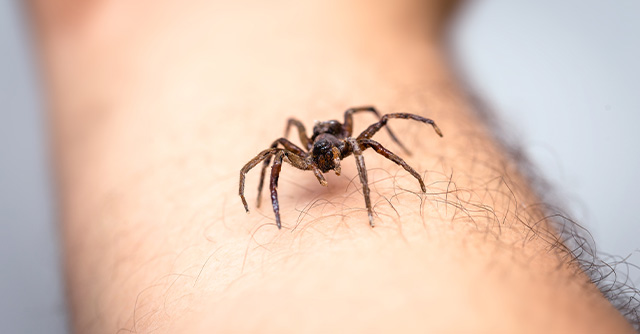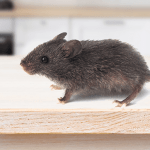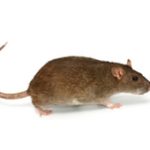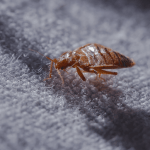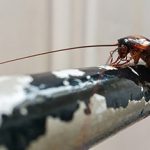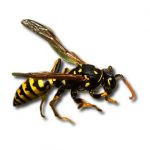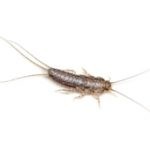What are the Common Spiders in the UK?
We all find spiders in our homes, regardless of what time of the year it is, we chase them away with the vacuum cleaner until we spot a new web in the corner sooner or later… Whether you have a phobia of these multi-legged creepy creatures or not, it’s not a bad idea to know a little bit about them, right?
This post will explore the different types of spiders that can be seen in the UK. And you’ll learn about how they look, their eating habits and habitat, as well as find out if any of them can pose a danger to your health.
Common false widow spider (Steatoda bipunctata)
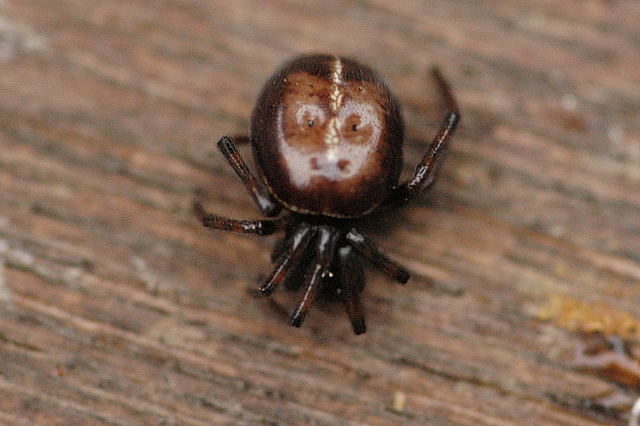
False widow spiders are not an uncommon sight in British homes and outbuildings. The belief that they have been around for over 130 years in the country (brought accidentally from overseas) can’t be confirmed, nor refuted. There are many species of this arachnid family but in the UK, you may come across the Common false widow, the Noble false widow and the Cupboard spider, which we will talk about here in more detail.
- Appearance: They can be between 8 and 14 mm in size (males are slightly smaller), with a glossy body and shiny 8 legs. Their round body is brown to dark-brown, with whitish patterns on the abdomen. They weave a web of an irregular shape.
- Feeding habits: These carnivorous insects will feed on roaches, woodlice, crickets and other spiders and bugs. That’s why you can call spiders nature’s pest control.
- Habitat: They would settle in any outdoor building or inside your home, once the weather turns in.
- Risk to health: The Common false widow spider will rarely bite. If they do, it will be in their defence. However, a human hand meddling with their web will be deemed threatening to them, so the spider will most likely flee and hide. An accidental bite may cause a mild reaction and swell around the site.
Image by: Jean and Fred / License: CC BY 2.0
Giant House Spider (Eratigena atrica)
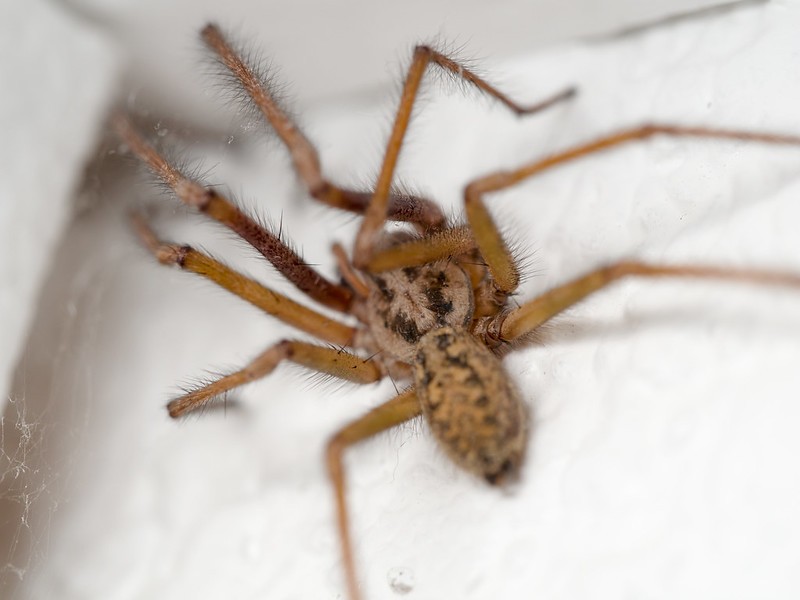
The Giant house spider is one of the fastest and largest spiders that you can spot in Britain and across Europe. It can run at a speed of around 2ft/s. These spiders build messy-looking webs with a funnel at one end, where the spider would hang around and hide, waiting for its prey to get caught. The web threads do not have adhesive properties.
- Appearance: They are not the largest species of the genus. Still, females can reach up to 19mm in size, whereas male adults can get up to 25mm. Their leg span, respectively, is about 45mm for females and between 30mm to 75mm for males. These spiders have poor vision, distinguishing only dark and light.
- Feeding habits: They feed on various insects, which end up on the web that can be built near the floor or up in a corner on the ceiling of a house. Cannibalism is also not unheard of among this species if food is scarce.
- Habitat: The Giant house spider is popular in the northern hemisphere. In properties, they will choose to build their webs in quiet places like attics, in cupboards, in the bathroom, behind boxes or the fireplace. See what attracts them to your home
- Risk to health: Their bite can be felt by a human but without any extreme adverse reactions, despite being potently venomous to insects. Read more about spider bites.
Image by: James Petts / License: CC BY SA 2.0
Sector Spider (Zygiella)

The name of this spider comes from the fact that they often build orb-webs with free sectors without connecting threads. The spider’s ‘hideout’ is connected to the web by a signalling thread, which runs between the free sectors.
- Appearance: The Sector spiders are about 11mm in size (males are smaller – 7mm), with yellow-brown bodies that have a distinct oak-leaf mark. The abdomen looks silvery, due to guanine crystals under the skin.
- Feeding habits: They would feed on various insects, caught in their sticky web. The spider sits at night in the centre of its intricate silky “meshwork”. Whenever a prey gets caught, it’s often moved to the spider’s hideout before being eaten.
- Habitat: They are found all over the world, often in shipyards and boats or around docks. You can spot them also on fences and walls, as well as on window frames and corners, where they build their webs.
- Risk to health: Sector spider species are not known to be harmful to humans.
Image by: Line Sabroe / License: CC BY 2.0
Daddy long-legs spider (Pholcidae)
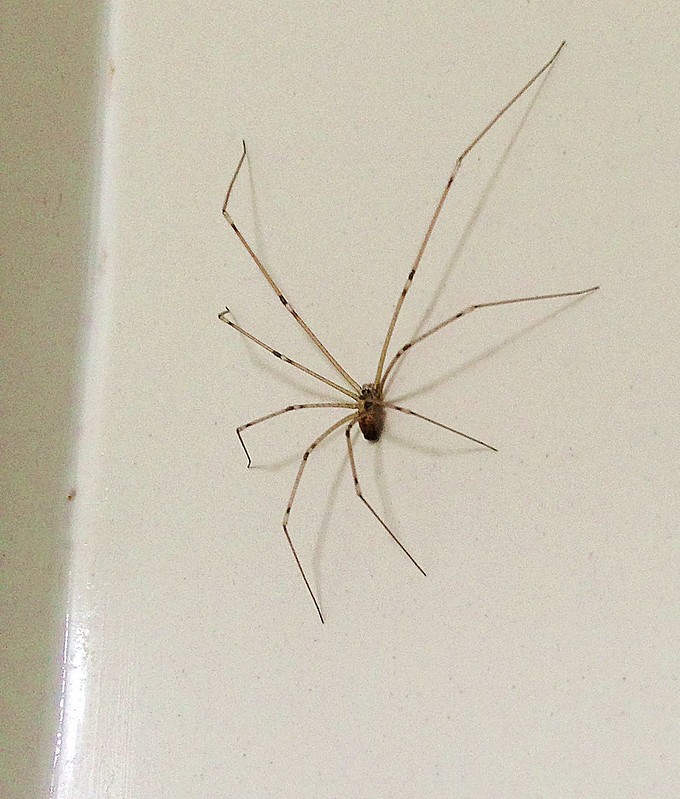
Daddy long-leg spiders are known by quite a few names – Vibrating spiders, Cellar spiders, Carpenter spiders and more. And they have nothing in common with the insect Daddy Longlegs, also known as Crane fly.
- Appearance: Daddy long-leg spiders have very long legs, of course, reaching up to 50mm in length. The body itself is smaller (between 2mm and 10mm) of clear or grey-brown colouring, with a round abdomen that may have V-shaped markings.
- Feeding habits: These spiders would happily feed on insects, trapped in their irregular-shaped, sticky web. Or they would feast on other spiders or their prey by visiting the prospective victim’s web. By using intense vibrating motions, Daddy long-leg spiders will pretend that they are the prey and this way, attract the host-spider, which is swiftly attacked as a consequence.
- Habitat: They are widespread across the globe and prefer to hide in burrows, under tree bark or rocks, as well as in caves. Indoors, they can be often found in cellars and attics, where no one would disturb them.
- Risk to health: There have been myths about the strength of this type of spider’s venom, only because they often feed on poisonous spiders, such as Redbacks. However, to humans, their bite is rather weak and may cause only a short-lived burning sensation.
Image by: vagawi / License: CC BY 2.0
Need spider control for your home or business?
Benefit from the skills and knowledge of the experts!
Cupboard spider (Steatoda grossa)
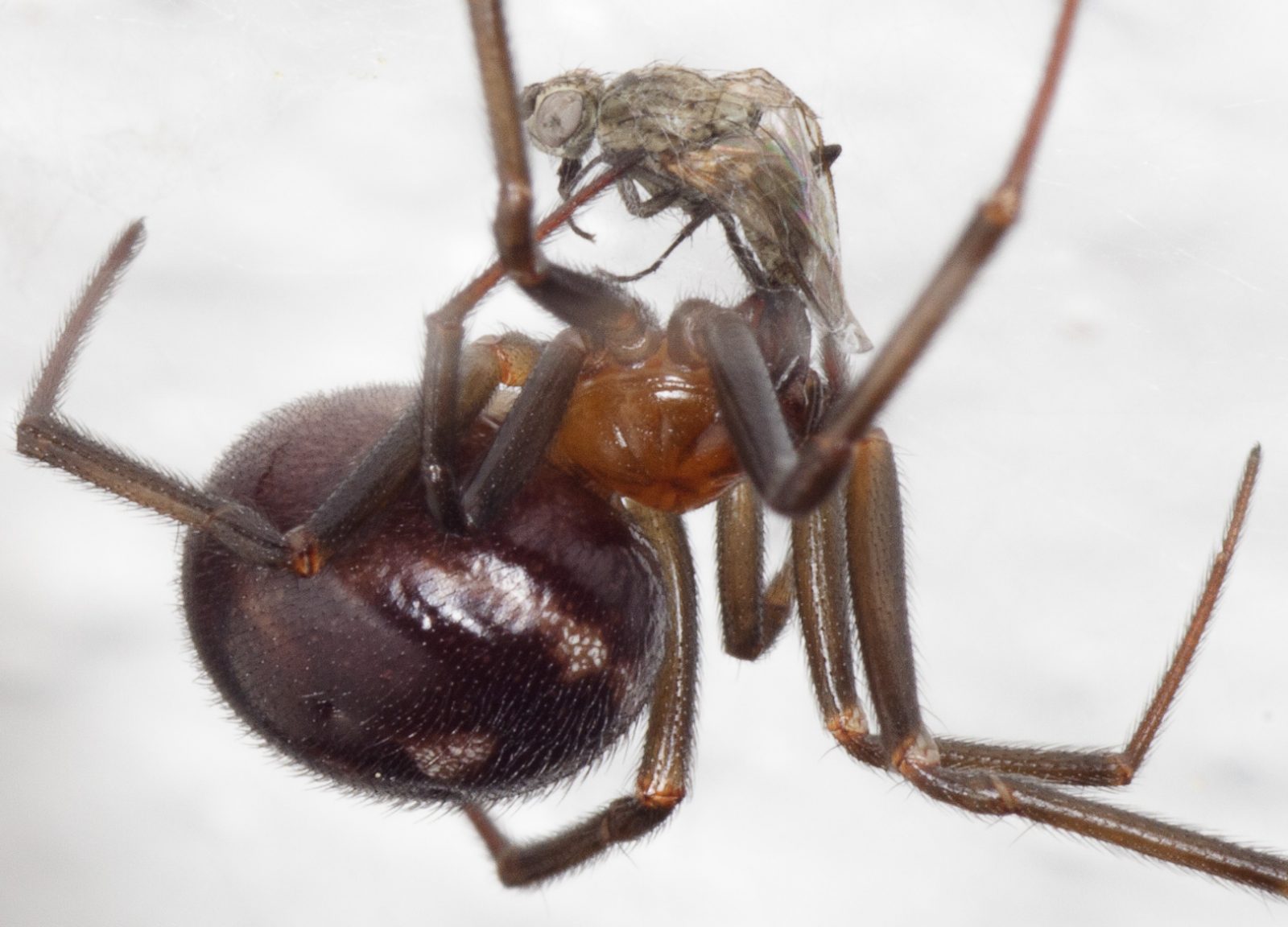
This Steatoda species can be spotted practically anywhere in the world. It’s known by different names, including Brown house spider.
- Appearance: The Cupboard spider is slightly smaller than its “cousin” – the Common false widow spider. The female is about 11mm long, whereas the male is about half the size – around 7mm. The colour of the body ranges from red- or purple-brown to black. Their abdomen has a whitish band and sometimes, the odd light-coloured speck. The legs are quite long in comparison to other spider species.
- Feeding habits: They feed on other spiders and insects.
- Habitat: Out in nature, the Cupboard spider will hide under the bark of trees and fallen leaves in forests. In your house, you may spot them in storage units, hence their name.
Image by: Dariusz Kowalczyk / License: CC BY SA 4.0
Spitting spider (Scytodidae)
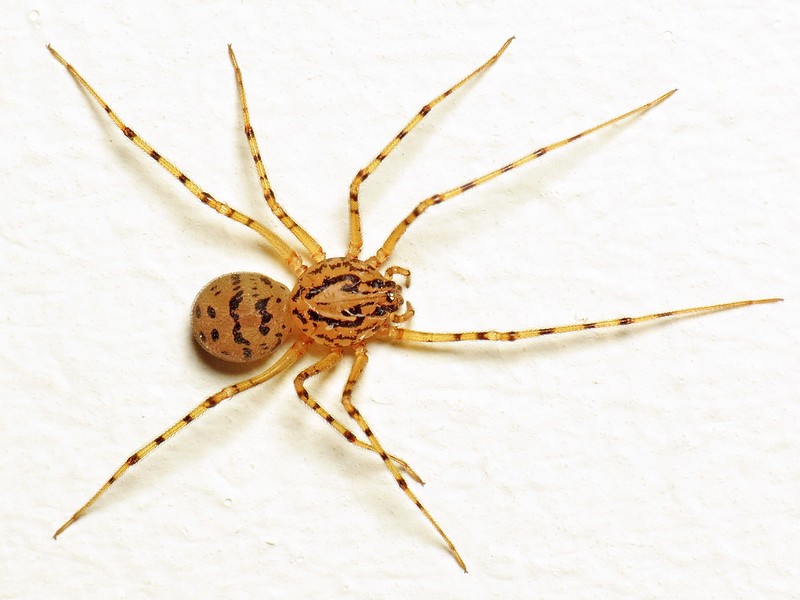
Spitting spiders are a reclusive and rather interesting arachnid species. In Britain, the only representative you can see is Scytodidae thoracica. Some Spitting spiders build webs and some don’t.
- Appearance: The species, you may come across in the UK, doesn’t get bigger than 3-6mm. The spider’s dome-shaped body and its legs are straw-coloured, covered in dark flecks or spots. Spitting spiders have only six eyes, whereas most other species have eight.
- Feeding habits: They use a unique hunting technique (at night), where the spider taps around the prospective victim (another spider or insect), then spit a venomous liquid that congeals around the prey. Soon after, the spider begins its feast.
- Habitat: The Spitting spider prefers heated buildings and has been often spotted in museums. It can be found predominantly in southern England.
- Risk to health: Its venom is not known to cause severe adverse reactions in humans.
Image by: Martin Cooper / License: CC BY 2.0
Jumping spiders (Salticidae)
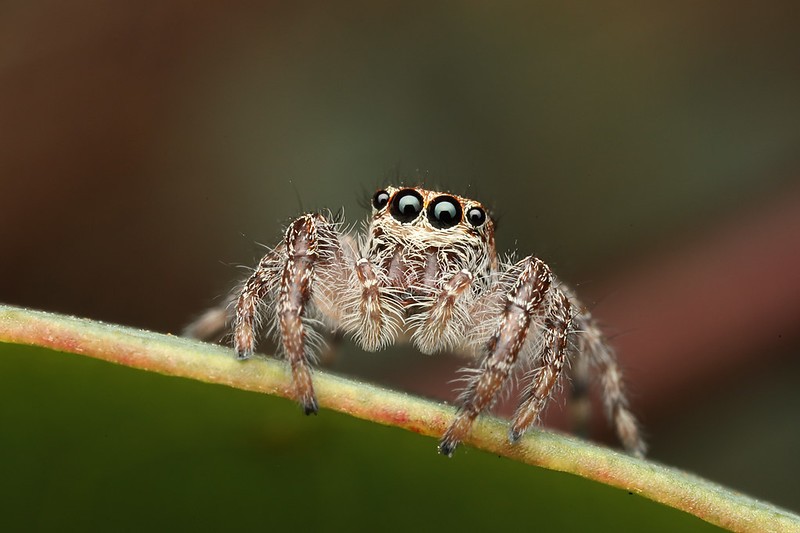
Spitting spiders are a reclusive and rather interesting arachnid species. In Britain, the only representative you can see is Scytodidae thoracica. Some Spitting spiders build webs and some don’t.
- Appearance: The species, you may come across in the UK, doesn’t get bigger than 3-6mm. The spider’s dome-shaped body and its legs are straw-coloured, covered in dark flecks or spots. Spitting spiders have only six eyes, whereas most other species have eight.
- Feeding habits: They use a unique hunting technique (at night), where the spider taps around the prospective victim (another spider or insect), then spit a venomous liquid that congeals around the prey. Soon after, the spider begins its feast.
- Habitat: The Spitting spider prefers heated buildings and has been often spotted in museums. It can be found predominantly in southern England.
- Risk to health: Its venom is not known to cause severe adverse reactions in humans.
Image by: Patrick Kavanagh / License: CC BY 2.0
Mouse spider (Scotophaeus blackwalli)
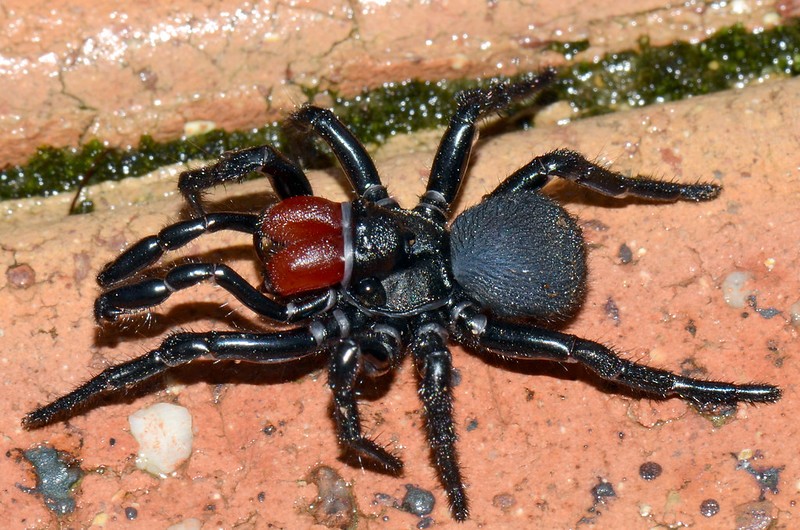
Let’s clear one thing. The harmless Mouse spider in the UK has nothing in common with the slightly venomous Australian Mouse spider from the Missulena genus. The European species is widespread in Britain and is mostly spotted in the autumn.
- Appearance: The females are about 11mm in size, whereas the male adults are about 9mm long. The name comes from their hairy abdomen, which is velvety and grey-brown in colour. They have stocky, strong legs and a brown body.
- Feeding habits: They love to scavenge on dead insects, but will also venture up on your ceiling and walls to look for potential prey.
- Habitat: Outdoors, they will hide in hollows and under the bark of trees, also in crevices in outside buildings. In your home, the Mouse spider will, again, prefer to hide and lay eggs somewhere dark and hidden.
- Risk to health: As we’ve just mentioned above, this species is not venomous, unlike its Australian relative.
Image by: Jean and Fred / License: CC BY 2.0
Noble False Widow Spider (Steatoda nobilis}
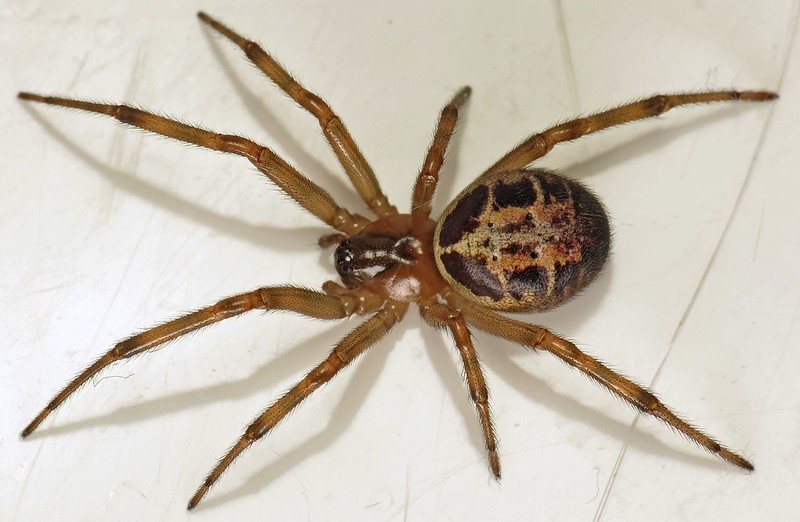
This large spider has been introduced in Europe and other parts of the world and we should point out that it has been discovered fairly recently outside of its original habitat – the Canary Islands. Mild winter weather has prompted the expansion of the Noble false widow spider’s population across Britain and Ireland.
- Appearance: It can reach up to 14 mm in size, where the male is again, a bit smaller. This Steatoda genus spider resembles the venomous Black widow spider the most. It’s also dark-brown to black in colour with light markings on the abdomen.
- Feeding habits: It preys on other spiders and various insects, as well, which often land on their sticky web of randomly constructed silky fibres.
- Habitat: Originally arriving from warmer climates, the Noble widow spider is adapting rapidly to continental weather conditions. Indoors, it hides in crevices and dark places.
- Risk to health: Its bite may cause some irritation, an allergic reaction and short-term illness-like symptoms in sensitive people.
Image by: Martin Cooper / License: CC BY 2.0
To sum up
As you can see, spiders in the UK are not a health-hazardous problem, but if you’ve got this creepy crawlies at home in their numbers, don’t hesitate to seek professional spider control service!
Need a professional help to deal with the spiders infestation?
Bear in mind that we only aim to provide some useful information about the types of spiders in the UK, what are the possible health risks and dangers to you and your family. We cannot guarantee that you will experience the above – mentioned concerns. We don’t provide professional medical advice.



